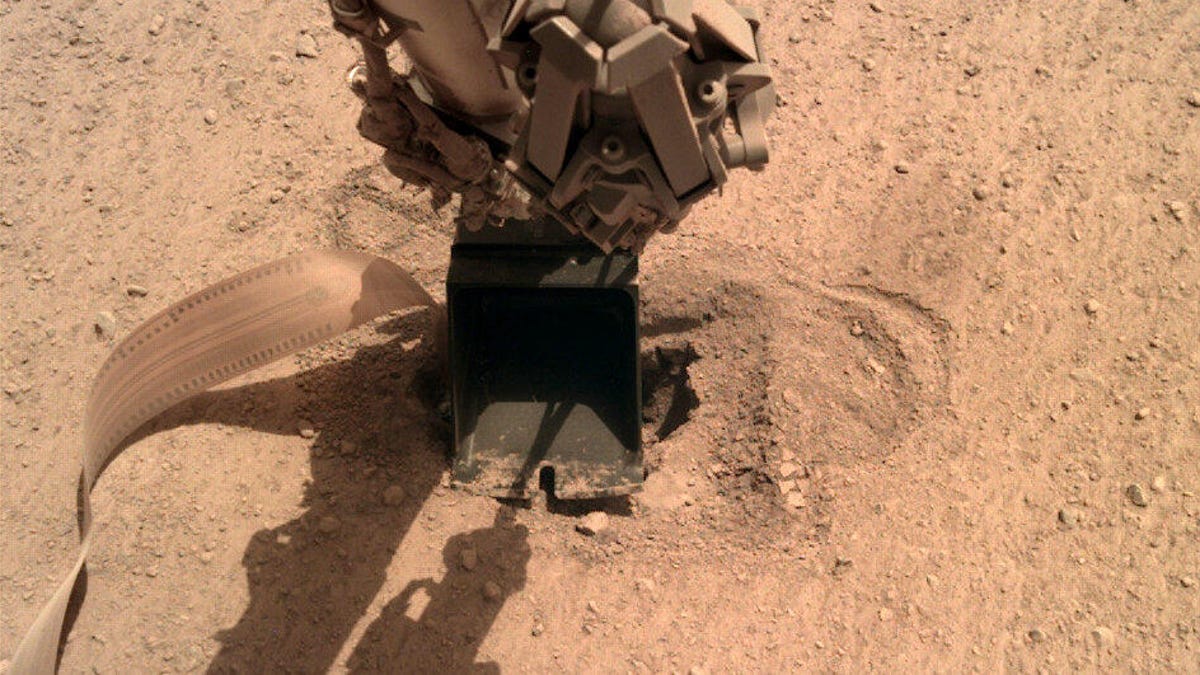NASA InSight lander finally pushes its burrowing 'mole' into Mars
The next steps will be critical for the struggling heat probe.
NASA's InSight lander has had a pretty triumphant run on Mars investigating marsquakes and listening to the weird sounds of the red planet. There's been one sticking point, though: Mars hasn't welcomed the lander's heat probe, known as the "mole."
The heat probe is designed to hammer into Mars, burrow down deep and take the planet's internal temperature, but the probe kept popping out of the ground. NASA and the mole team have spent over a year working through possible solutions for the stuck mole, and they may finally be making some progress.
After several assists from my robotic arm, the mole appears to be underground. It’s been a real challenge troubleshooting from millions of miles away. We still need to see if the mole can dig on its own. More from our @DLR_en partners: https://t.co/7YjJIF6Asx #SaveTheMole pic.twitter.com/qHtaypoxPp
— NASA InSight (@NASAInSight) June 3, 2020
"After several assists from my robotic arm, the mole appears to be underground. It's been a real challenge troubleshooting from millions of miles away," the NASA InSight account tweeted on Wednesday.
The InSight team shared a GIF of the process, which involved pushing on the top of the probe with the lander's scoop at the end of its robotic arm. This bit of good news suggests the mole's problem isn't a rock getting in its way, but rather the makeup of the martian soil at InSight's landing spot. The probe simply hasn't been able to get enough friction to progress downward.
The mole team is led by the German Aerospace Center (DLR). You can dive deep into the details of the painstaking work it took to get to this point in a Wednesday logbook update from the DLR's mole instrument lead Tilman Spohn. It's a study in patience and perseverance.
The next crucial step is to see if the mole can dig on its own, a process DLR is calling the "free mole" test. If that works, great. If not, the team may try filling the hole with soil or using the edge of the scoop to push on the probe.
InSight is on a mission to learn more about how rocky planets like Mars and Earth form. The heat probe could provide valuable data for scientists, but even if it doesn't work out, InSight's science mission will still be a success.


